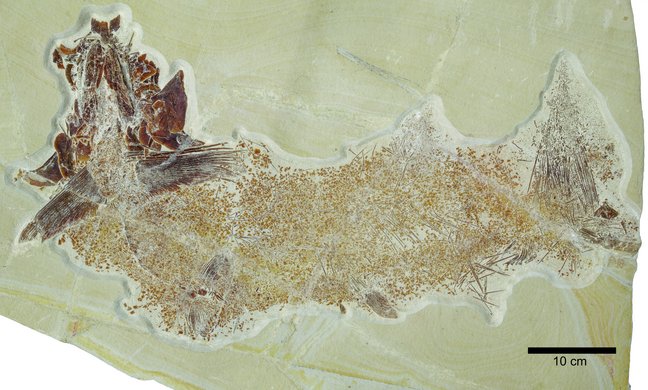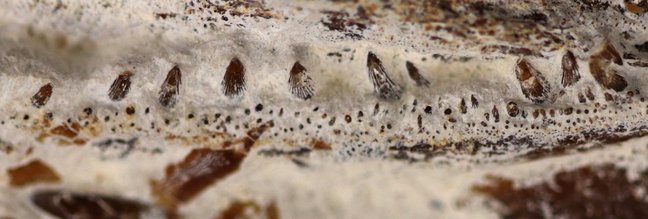For paleontologists, the Nusplingen quarry is a true treasure trove. Fossils from the Upper Jurassic, over 150 million years ago, are regularly found in the so-called Nusplingen Plattenkalk. A fossil discovered in 2022 has now not only been described as a new species but also provides new and insightful perspectives on the evolution of the Pachycormidae, an extinct family of marine fish.
The Pachycormidae are bony fish from the Mesozoic era (about 252 to 66 million years ago) and are best known for their enormous sizes. Some members of this family grew up to 17 meters long! Another special feature within this fish family is the interesting specializations of two lineages: while one lineage evolved into toothless filter feeders (Asthenocorminae), the other lineage mainly consisted of fearsome predators with long and acutely pointed teeth (Hypsocorminae).
The new specimen is an early representative of the fish-eating lineage (Hypsocorminae). Simocormus seyboldi (named in honour of its discoverer Paul Seybold) is about 80 cm long and shows several primitive features, including a complete “armor” of large, keeled scales. An analysis of these scales provided surprising insights into the evolution of the aforementioned lineages within the Pachycormidae: despite their different lifestyles, later representatives of both groups independently reduced and even completely lost their scales over the course of evolution — an example of convergent evolution!
The article was published in the "Journal of Vertebrate Paleontology".


